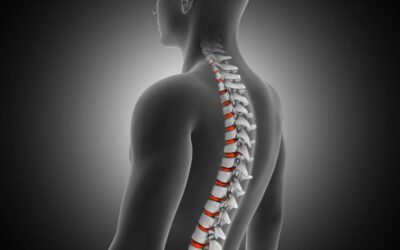Chiropractic adjustments for tennis players can significantly enhance performance while minimizing injury risk. Tennis demands flexibility, strength, and rapid movement, which can strain the body. Here are five essential chiropractic adjustments to keep you in top shape on the court.

1. Spinal Alignment for Tennis Performance
Proper spinal alignment is the foundation of overall musculoskeletal health. Misalignments in the spine can lead to imbalances in your posture and movement, increasing the risk of injuries on the court.
- Why It Matters: A well-aligned spine ensures that your nervous system functions optimally, enhancing your coordination, balance, and reflexes.
- The Adjustment: Chiropractors use gentle, targeted adjustments to realign the vertebrae, relieving pressure on the nerves and improving spinal health. This adjustment can help reduce back pain and improve your range of motion, allowing for more fluid and powerful movements during play.
2. Shoulder Adjustments
The shoulder joint is highly susceptible to injuries due to the repetitive overhead motions required in tennis. Proper alignment and function of the shoulder are crucial for powerful serves and strokes.
- Why It Matters: Misalignments in the shoulder can lead to impingement, tendinitis, and other common tennis injuries.
- The Adjustment: Chiropractors can perform specific adjustments to the shoulder joint, ensuring it moves smoothly and efficiently. These adjustments can help alleviate pain, improve shoulder stability, and prevent injuries such as rotator cuff tendinitis.
For additional tips on preventing injuries, see our guide on Top 5 Exercises for Neck Pain Relief.
3. Elbow and Wrist Adjustments in Chiropractic Care for Tennis Players
Tennis players often experience issues with their elbows and wrists due to the constant gripping and swinging of the racket. Conditions like tennis elbow (lateral epicondylitis) are common but preventable with proper care.
- Why It Matters: Ensuring that your elbow and wrist joints are properly aligned can reduce the strain on tendons and ligaments, preventing overuse injuries.
- The Adjustment: Chiropractors use gentle techniques to adjust the elbow and wrist joints, improving their alignment and function. This can help reduce pain, enhance grip strength, and improve overall performance on the court.
4. Hip and Pelvic Adjustments
The hips and pelvis play a critical role in providing the power and stability needed for quick lateral movements and powerful strokes in tennis.
- Why It Matters: Misalignments in the hips and pelvis can lead to imbalances in your stance and movement, increasing the risk of lower back and leg injuries.
- The Adjustment: Chiropractors perform adjustments to ensure that the hips and pelvis are properly aligned. This can improve your balance, stability, and power, allowing for more effective and injury-free play.
5. Knee and Ankle Chiropractic Adjustments for Tennis Performance
Quick direction changes and sprints on the tennis court put significant stress on the knees and ankles. Proper alignment of these joints is essential for preventing sprains, strains, and other injuries.
- Why It Matters: Misaligned knees and ankles can lead to improper weight distribution and increased risk of injury during sudden movements.
- The Adjustment: Chiropractors adjust the knees and ankles to ensure proper alignment and function. This can help reduce pain, improve joint stability, and enhance your agility on the court. For additional knee support tips, consider reviewing the NHS’s guide on joint pain and injury prevention.
Conclusion
Chiropractic care offers a holistic approach to preparing your body for the physical demands of tennis. By addressing misalignments and optimizing joint function, chiropractic adjustments can help prevent injuries, reduce pain, and enhance your overall performance. Before hitting the tennis court, consider incorporating these essential chiropractic adjustments into your routine to stay in top shape and play your best game. For more ways to support your musculoskeletal health, check out our post on 7 Key Facts About Chiropractic Care for Muscle Spasms.
Disclaimer
This blog provides general information and discussions about health and related subjects. The information and other content provided in this blog, or in any linked materials, are not intended and should not be construed as medical advice, nor is the information a substitute for professional medical expertise or treatment. If you or any other person has a medical concern, you should consult with your healthcare provider or seek other professional medical treatment. Never disregard professional medical advice or delay in seeking it because of something that you have read on this blog or in any linked materials.





